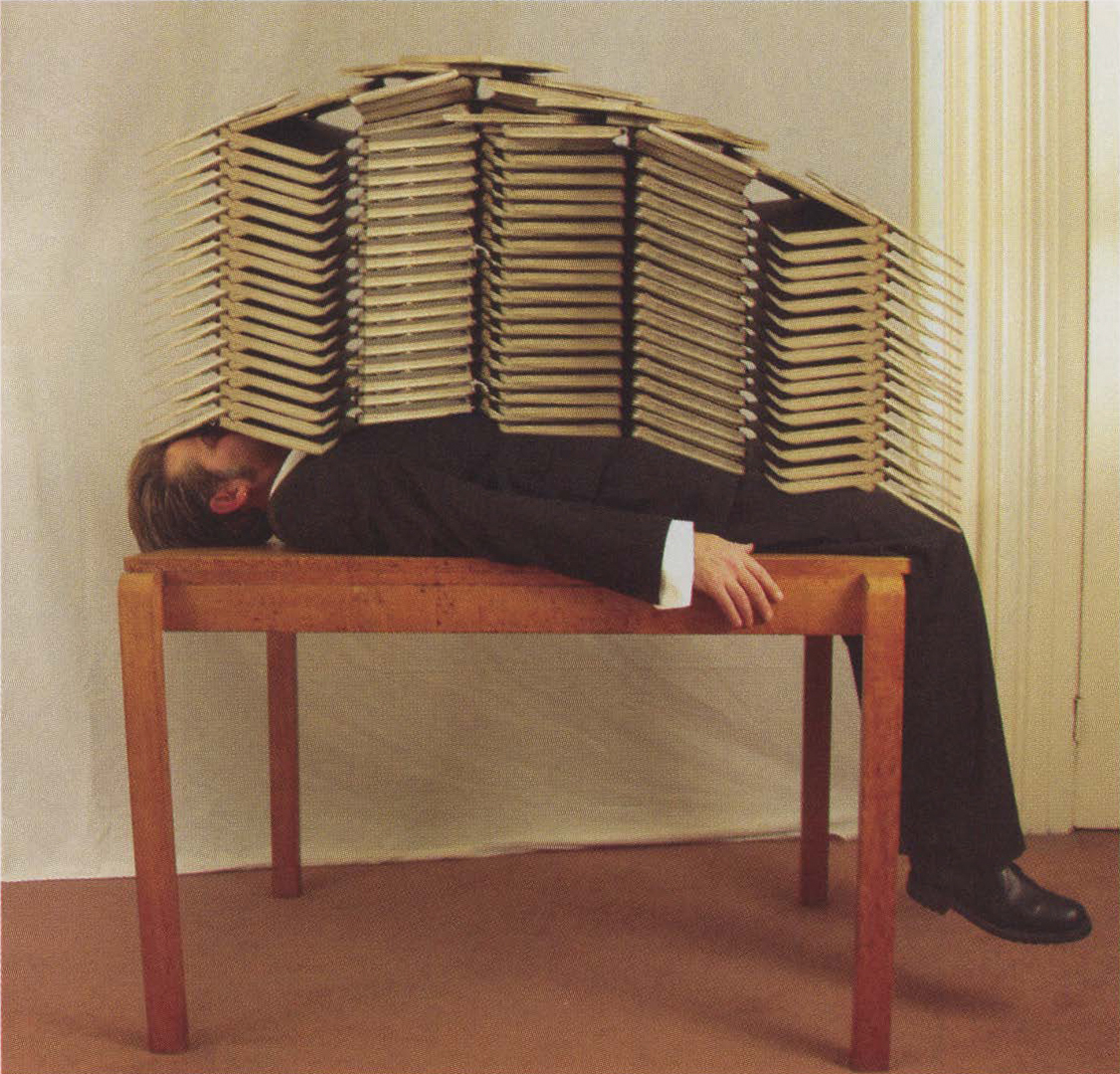Greg Daville: Estate
Artist(s):
Title:
- Estate
Exhibition:
Creation Year:
- 2004
Medium:
- Digitally manipulated photographic print
Size:
- 42 centimeters x 59.4 centimeters
Category:
Artist Statement:
Estate is one of an ongoing series of digitally manipulated photographic prints called Rescued Items from Babel. The figure is employed in staged environments in order to explore the failings and aspirations of visual, verbal, and written communication, particularly in relation to the thought process and the creative act. In this particular image, urban architecture, bureaucracy, and the homogenous ambience of the office environment provide the theme. The images form a group of self-portraits that use visual states of collapse as a metaphor for the human condition, particularly with regard to aspiration, planning, and even self-sabotage. Each piece includes one or more figures posed with a variety of props: artist’s notebooks and miniature ladders have been used thus far. The recorded constructions made from the human form and props are further developed into impossible structures through photo manipulation. This work forms part of a larger cross-media proposal called Abbauhaus, the main theme of which looks at collapse as a state of resolution. Further information and downloadable pdf documents are available at: www.site-to-be-destroyed.co.uk
Technical Information:
I have been using digital technology in my work for some years now, working with Director, Flash, Dreamweaver, animated gifs, and Final Cut Pro. The main software I use is Photoshop, which I employ when making digitally manipulated or constructed images. In the past, Oust as I did when I used to make traditional collages with paper), I would appropriate found images as source material. In Rescued Items from
Babe/, I photograph the pieces myself. Each “set” is individually researched and constructed. It usually takes a number of different photographs taken from the set to acquire all the necessary information to make the final image. I use an Olympus Camedia (5 million pixel) camera and shoot at the highest available quality setting, which in this case is Tiff. T he high-resolution photographs are imported into
Photoshop, layered, coloured, and collaged. With this particular series, I am interested in attaining an almost painterly quality in the ambience and light, and realising images that do not look obviously digitally manipulated. Post-production work is carried out closely with the printer, usually making a number of test runs before the highest
quality is realised. Using video, Director and Final Cut Pro, I plan to develop some of these images into interactive plasma screen presentations.





